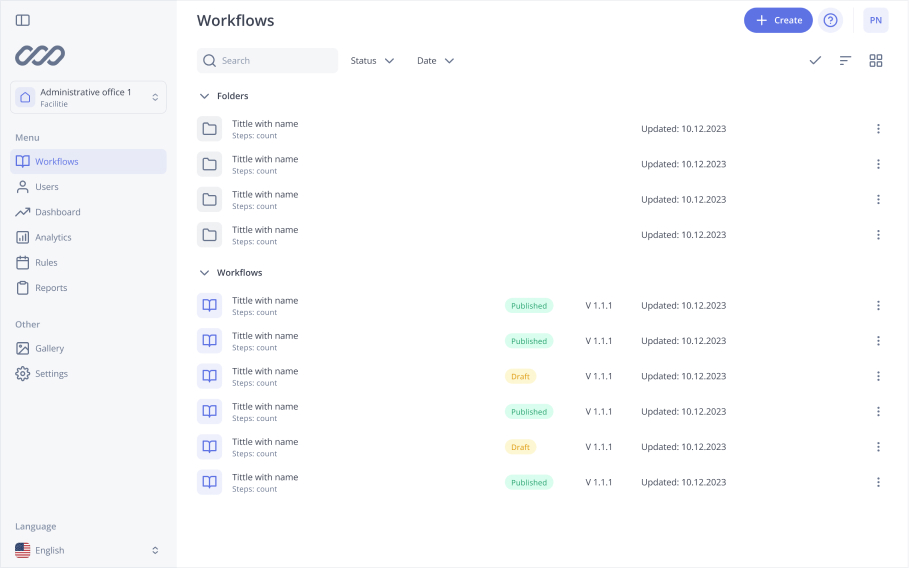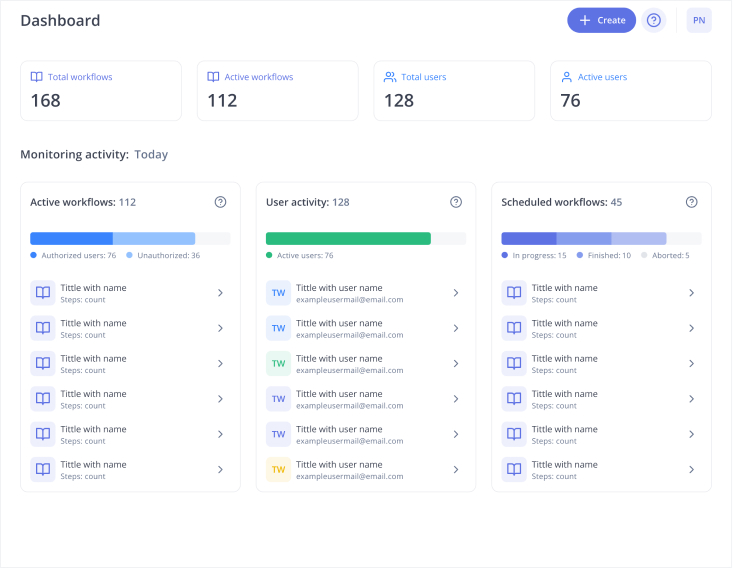Everboarding
Most companies today offer some form of onboarding. It might be basic, templated, or disorganized, but it exists. You show up, get your equipment, skim some policy documents, join a few intro calls, and there might be another worker assigned to help you through the first week. This initial onboarding typically takes place within the first few weeks or months, establishing the foundation for new hires to acclimate to their roles and the company culture.
But what happens after that? In far too many organizations, the answer is: nothing. Once the checklist is completed and the probation period is over, you’re expected to operate at full capacity.
This is the problem with treating onboarding as a one-time event. Traditional onboarding methods assume people can absorb everything they need to succeed in their first few days or weeks. They have limitations in fostering employee engagement and performance. It ignores the reality that jobs change, industries evolve, and no one ever truly “arrives.” The concept of onboarding as a box to check has become outdated.
Enter everboarding: the ongoing process of educating and enabling employees across their entire journey at a company. Instead of front-loading all the information at the beginning, everboarding integrates learning into the flow of work—continuously, strategically, and in real time.
What Is Everboarding?
Everboarding is about transforming learning from a phase into a practice. It provides the tools, content, and support employees need at every stage of their development, not just during their first days. Everboarding creates personalized learning experiences by offering individualized training and ongoing feedback, which enhances employee progress and ensures the effectiveness of the process.
This is not about dragging people through endless online courses or mandatory compliance training every quarter. True everboarding is thoughtful. It’s context aware. It’s integrated directly into workflows and aligned with both personal growth and organizational goals.
Think of it this way: onboarding gets you through the door. Everboarding helps you stay, grow, and thrive once you’re inside by fostering a continuous learning culture that promotes ongoing development and skill enhancement.
Why the Shift Now?
Everboarding is not a trendy HR thing, but a strategic response to profound structural changes in the way work is done.
Firstly, the speed of change in technology, tools, and business models is relentless. What was relevant two years ago is obsolete today. People need ongoing learning just to keep up, let alone get ahead.
Secondly, remote and hybrid work environments have eliminated the organic learning that used to happen in the office. There’s no more overhearing how things are done or casually learning by watching others. Learning has to be intentional now.
Thirdly, employees — especially Millennials and Gen Z — have different expectations. They want development, feedback, continuous improvement. Companies that ignore this risk losing their top talent to organizations that take growth seriously.
Finally, the cost of not evolving is steep. When learning stalls, productivity drops, innovation slows, and turnover increases. A reactive, outdated approach to employee development is not just ineffective, it’s expensive. Continuous learning leads to improved employee satisfaction and retention, making it crucial for companies to foster a culture of ongoing growth and development.
The Core Components of Everboarding
To make everboarding a reality, companies need more than good intentions. They need systems, leadership support, and a clear cultural shift. Here are the critical elements of a successful everboarding framework:
- Contextual Learning: Dumping a 90-minute video on someone during week one does more harm than good. People forget 80% of what they learn if it isn’t applied immediately. The solution is to provide short, timely, relevant learning content at the moment it’s needed. This might look like micro-tutorials, checklists, or embedded guidance within the tools employees already use.
- Personalized Paths: Everyone has a different baseline of knowledge and a different learning style. A one-size-fits-all approach to enablement is doomed to fail. Everboarding should be tailored based on role, level, prior experience, and growth goals. Someone in sales should have a different learning journey than someone in product or legal.
- Workflow Integration: Training should not feel like an interruption. The most effective learning is baked into the systems people use every day—Slack, Notion, email, CRM tools, and so on. A robust technology platform can facilitate seamless learning within these daily workflows. If people have to dig into the portal or watch an hour-long video, you’ve already lost their time.
- Manager Involvement: Managers are not just performance reviewers—they’re the most powerful learning enablers in your company. They need to be trained to coach, guide, and reinforce learning consistently. The best everboarding programs give managers the tools and expectations to support their people in real-time.
- Feedback Loops: Learning content and strategy must evolve continuously. That means creating mechanisms to collect feedback from employees about what’s working, what’s not, and what’s missing. Use surveys, 1:1s, and analytics to measure learning effectiveness. Tracking various metrics such as course completion, employee competency, and content effectiveness is crucial for assessing the overall impact of onboarding and training initiatives on employee skills and retention. More importantly, act on that feedback quickly. A static enablement system is a dead system.
- Culture of Curiosity and Safety: People can only learn if they feel safe admitting what they don’t know. That requires a culture where questions are encouraged, mistakes are de-stigmatized, and learning is seen as a strength — not a weakness. If people are faking competence to avoid judgment, your learning program has already failed.
When Does the Onboarding Process End?
In most companies, onboarding is treated as a ritual. There’s a welcome email, a flurry of introductory meetings, and a training portal no one ever returns to. After 30 or 60 days, the process is “complete.” However, for new employees, everboarding supports their continuous learning and adaptation, ensuring they are always equipped to handle new challenges and grow within the organization.
But that mindset is completely out of touch with modern work.
Employees face new challenges constantly. A marketing manager might suddenly need to learn about AI tools. An engineer might get promoted and need leadership training. A customer success rep might switch to product management. How are you supporting those transitions?
Everboarding assumes that learning never really stops. It adapts to new roles, projects, tools, and priorities. It sees every moment of the employee’s experience as a learning opportunity, emphasizing that learning is a continuous process that evolves with new roles and challenges.
The Business Case for Everboarding
Let’s be brutally honest: companies don’t do things just because they sound good. They do them because they work. And everboarding works — if done correctly.
Here’s what companies stand to gain:
- Increased Retention: People don’t quit companies that invest in them. Studies consistently show that employees who are learning and developing are far more likely to stay. Continuous learning and development approaches, such as everboarding, significantly improve employee retention rates by fostering a culture of ongoing education. In a market where replacing a mid-level employee can cost over $50,000, that’s a win worth chasing.
- Faster Ramp-Up Times: Instead of waiting six months for someone to “get up to speed,” everboarding accelerates their learning through constant, targeted support. This approach not only speeds up the learning process but also facilitates the monitoring and individual tracking of employee progress. Tools like isEazy Engage support personalized learning and ongoing feedback, ensuring employees start contributing faster—and with more confidence.
- Agile Workforce: A company that can retrain and reskill its workforce in real-time has a competitive edge. Whether it’s responding to a new technology, market shift, or regulation, everboarding gives teams the flexibility to pivot without panic.
- Higher Engagement and Morale: Learning is one of the top drivers of employee engagement. People want to feel like they’re growing, not stagnating. A company that prioritizes development builds loyalty and motivation.
- Stronger Leadership Pipelines: Future leaders aren’t born — they’re trained. Ongoing development ensures that high-potential employees are always being prepared for the next challenge, not just reacting to it.
Common Pitfalls
Of course, everboarding isn’t a magic fix. There are plenty of ways to get it wrong. Here are the most common traps — and how to avoid them:
- Dumping too much content without structure: More isn’t better. Focus on quality, relevance, and timing. Ensure there is adequate training time to absorb information, which aids in retention and addresses individual employee needs.
- Treating everboarding as an HR-only function: Learning must be a leadership priority, not just an L&D checkbox. Involve learning and development teams to support continuous learning and leverage subject matter experts for content generation.
- Ignoring user experience: Clunky tools, outdated platforms, or inaccessible formats kill engagement. Make it easy.
- Forgetting measurement: You need metrics—completion rates, feedback, impact on KPIs. If you can’t measure it, you can’t improve it.
- Leaving managers out of the loop: If managers aren’t reinforcing learning, it won’t stick.
Conclusion
Work is no longer static. Roles change. Teams evolve. The problems you’re solving today might not even exist next year. That means your approach to learning can’t be static either.
Everboarding isn’t just a new term — it’s a necessary shift. It’s about acknowledging that people are at their best when they’re constantly learning. It’s a strategic investment in adaptability, performance, and culture. By fostering ongoing learning and development, everboarding supports employees in defining and achieving their career paths, aligning their growth with organizational goals.
Companies that figure this out early will win. The rest will keep wondering why their best people keep walking out the door. If you want talent to grow with you, give them more than a welcome packet. Build a culture that teaches, supports, and evolves — every day. Continuous learning not only enhances productivity and innovation but also leads to greater personal and job fulfillment for employees.
Simplify the way people work and learn at the frontline
See the industry-leading how-to platform in a 30-minute live demo.
Learn more
